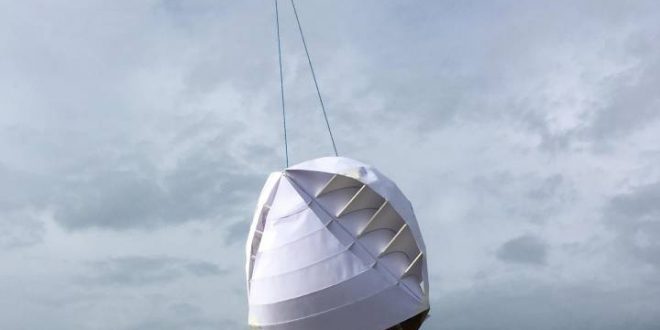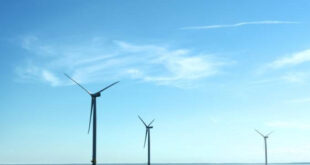Traditional wind generators are very efficient. but only when they`re pointed straight into the wind. You don`t see much wind generation in large cities. because the built-up environment plays havoc with wind patterns. causing swirling three-dimensional vortices where wind constantly changes direction.
So there`s plenty of wind to draw energy from – urban winds can be very strong – but if you want to convert them into electricity. you`d need something that could take wind from any direction. including upwards. downwards and everything in between. and harness it into rotating a turbine in a constant direction.
And that`s what we`ve got here. Inspired by NASA `tumbleweed` technology designed to use the swirling winds on Mars to continually push an exploration ball in a single direction. the O-Wind team set out to design an omnidirectional turbine shape.
The structure uses a more or less spherical shape. covered with vents that have large entrances and small exits for air to pass through. Thanks to Bernoulli`s principle. pressure differences are generated that cause the sphere to rotate clockwise around a single fixed axis no matter which direction the wind is coming from. This rotational energy can then be used to drive a generator and produce electricity.
The team. from Lancaster University. tested their prototypes with a hairdryer. which was enough to prove its initial efficacy and win the UK national Dyson award a month ago. before being announced as the global winner today.
Team member Nicolas Gonzalo summed up the significance of the device saying. `it allows people living in apartments to generate their own electricity.`
House owners have had the option of solar for many years now. but the O-Wind turbine could give similar power production capabilities to city high-rise dwellers in a world that`s urbanizing quicker by the year.
 Iran Energy News Oil, Gas, Petrochemical and Energy Field Specialized Channel
Iran Energy News Oil, Gas, Petrochemical and Energy Field Specialized Channel




